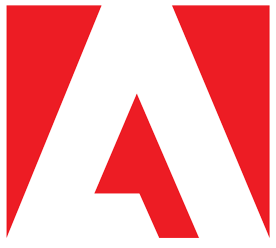I Left My High Paying Job & Built A Profitable SaaS [From Serbia]
Who are you and what business did you start?
My name is Kristian Zivkovic, and I am the Co-Founder of Skylead, a Sales Engagement Software that facilitates and enhances Lead Generation thanks to its multichannel outreach. Skylead allows sales professionals and anyone in search of business opportunities to generate and reach out to their leads faster and easier than ever before.

By profession, I am a software engineer. However, I have always been rather drawn by innovation and change. Ever since high school, I have worked on different projects, many of which failed, but taught me valuable lessons that later lead to successfully co-founding Skylead.
To witness our growth is the increase by 127% with active users from the beginning of 2021 and the fact that our team is 5 times bigger than a year and a half ago.
What is your background story and how did you come up with the idea?
I left school, two Universities to be precise, and a well-paid job to co-found Skylead.
Skylead officially exists for 2 years and 3 months. In the beginning, it was 4 of us. We met at Belgrade’s Startup Center, where we worked on different projects. Once we came up with the idea of creating Skylead, we left our jobs. It simply seemed a better business opportunity.
The idea of Lead Generation Software came up after we did some market research and realized that this branch had a lot of potential for improvement. Our goal was to think of a better solution for automated outreach. However, we did not know if our idea was the right one, how we were going to solve certain problems, or offer better solutions for some features.
To validate the product we first spoke and reached out via our tool to people who wanted to test it. At that moment, the other two co-founders were in Amsterdam where they found many test users. This is when it became clear that our target audience was B2B marketers and that they will make the most out of our tool.
Two of the previous co-founders were sales and marketing-oriented, while my current business partner Jovan and I were in charge of developing the product. Later on, we realized that we did not have the same vision of where we see Skylead in the future so we professionally parted ways.
Initially, it was a bumpy ride. We used to stay up till sunrise for several months before the first version of Skylead was launched. As I mentioned earlier, we had well-paid jobs and we entered this project with all of our savings. Despite that, right before the first launch, we were completely moneyless. We were either going to launch it or fail miserably. Having a first-paying customer really felt good!
Take us through the process of designing, prototyping, and manufacturing your first products
First, we researched the existing tools that were what seemed to be our future competition. Initially, we were figuring out what features they had and tried to find better solutions.
What we produced first was definitely not what we had imagined. The initial version of Skylead was way too complicated to use. That is when Jovan and I focused more on making it user-friendly. What we came up with was very basic in comparison to what Skylead has now. But the clock was ticking, we were running out of funds, and we did not have any more time to further develop the software. At least for the first release.

Describe the process of launching the business
Our initial goal was to make the software work and to find the first test users. The other two, now former co-founders, were in charge of finding people who were willing to test it free of charge. This way we could get feedback and see what was working and what needed improvement. The current co-founder and I were in charge of the development solutions.
Our growth has been increasing ever since the launch, despite the software not being perfect. We were solving problems on the go.
When I look back and think about the initial phase, of course, we could have done something better. It could always be better.
What I’ve learned from this experience and wish I could say to my “younger self” would be to focus more on what customers say, learn from their feedback, and develop the software further from there instead of relying majorly on our vision.
This would cost us working on a certain feature for months and then getting feedback that that feature was completely useless for our clients.
Since launch, what has worked to attract and retain customers?
Initially, we were relying only on using our tool to reach out to our potential customers. We had no public presence, which now I see as a mistake. We were still growing pretty rapidly. However, maybe if we had invested more into sales and marketing from the very start, our ROI would have been much higher.
Currently, we use Facebook ads, Google ads, newsletters, Facebook, Instagram, and YouTube as far as our online presence is concerned.
Also, white labeling our product still makes a major part of our revenue. The number of whitelabel users is higher than all of Skylead’s individual users together. White labeling Skylead was not available from the very start, but it is something we started around 6 months after the first sale.
Our main “trick” for retaining customers has always been impeccable customer care. This is something our users have always been satisfied with. Yes, we had moments when we were understaffed and maybe customer care suffered a bit, but we were always striving to solve that problem as quickly as possible.

How are you doing today and what does the future look like?
I can say that we are doing pretty well. We are profitable, have more customers, and have bigger growth. However, we are still working hard on all aspects of our business.
Our customer acquisition cost is not the same for individual users and bigger clients such as businesses and done-for-you agencies.
We measure “conversion” from the moment a potential user clicks on an ad until they book a demo call. The Average Conversion Rate is around $50, but it varies for individual users and bigger clients. Individual smaller users stay with us for around 4 months. Bigger users stay for a longer period of time. The majority of them are still with us since they first signed up, many of which were even over a year ago.
- Website monthly traffic: 22000 visitors.
- Average Time On Site: 1:04
- Gross Margin: 90%, Skylead cost is $100 per account
- Ad Budget: $4,000
- Customer Lifetime Value: $1576.90
The newsletter is aimed towards our existing clients, who are regularly being updated on our new features, educational and informative material (blogs and YouTube videos), and other important information.
Our short-term goal is to improve our Customer Support and Success. This way we want to solve user problems quicker, hear them out, and strengthen our business relationships. Of course, we are also constantly working on fixing bugs and other minor problems in our software.
Our long-term goal is to be the first fully developed and “complete” Sales Development Representative so that the individual can focus on closing the deal only. Everything else would be fully automated. It is a pretty ambitious goal. We truly want to redefine this industry.
Through starting the business, have you learned anything particularly helpful or advantageous?
As mentioned before, our main mistake was the lack of investment into Sales and Marketing from the very start. We put too much focus on the product instead of its online presence. I also think that we should have valued customers’ feedback more. That would have saved us months of working on features that users found completely useless.
On the other hand, we predicted well the development of the market and reacted promptly compared to our competitors.
Despite that, a lot of things were out of our control. The launching of the product almost coincided with the COVID pandemic. Because of that many users were canceling their accounts in a panicky way. The pandemic also caused difficulties to open our UK office and connect Stripe. In the meantime, LinkedIn decided to do the factory reset. Our government abolished tax breaks that existed forever to take more instead from the IT industry.
However, I did learn some valuable lessons.
The key to success is working with people who share your vision and goals. Otherwise, it’s bad.
Aside from that, I’ve learned the importance of Sales and Marketing and how to prioritize product features. Ask, ask, ask! I cannot stress enough the importance of users’ feedback. Don’t make features because you, as a software engineer, think they are cool. Start with the basic version of your product and then develop it further.
I’ve also learned the importance of persistence, discipline, and self-improvement. Hard work beats talent.
What platforms do you use for your business?
As far as CRM is concerned, we have been using Pipedrive, but now switching to User where Skylead Help Center is also located. Our newsletters are sent through Getresponse.
We have a Facebook Page and a Group Skylead Outreach Tribe, where we share educational material and keep our users and other members up-to-date with new features, releases, and others. Our Instagram page skylead.team is aimed towards employee branding.
Recently, we started the Skylead YouTube channel as well.
What have been the most influential books, podcasts, or other resources?
Think and go rich by Napoleon Hill is the book that opened a lot of interesting insights for me as an entrepreneur.
Lately, we listen to Simon Sinek, as he speaks a lot about company culture and employees. Initially, that was not the case, but as our business and the number of employees grew, we found his point of view crucial for a healthy and productive work environment. The book I recommend is Start With Why.
I also learned a lot from the mentor I had in my previous company.
Advice for other entrepreneurs who want to get started or are just starting?
I would like to advise my fellow developers, as I come from the same background, and I can see now what could have been done differently.
Developers are usually, just like I used to be, strictly product-oriented. We make software because we like it or according to what we believe is the right way. Developers rarely think about the software as a marketable product, and even more importantly, about users’ needs. My advice is to research the market and listen to your client's feedback.
A good product doesn’t mean a lot of customers. A slightly weaker product will sell better if led by Sales and Marketing. In our case, we were lucky that our software was selling even without a strong online presence, however, now we realize that focusing more on Sales and Marketing would have brought even bigger growth.
Also, have in mind that less is more. That is, a product doesn’t have to be perfect. Focus on getting the basic set of features that will be useful to your clients. Then listen to their feedback and their needs. This will spare you working for months on a certain feature that might turn out to be an epic failure. Additionally, listening first to what users need might change the software roadmap.
This is for every stage of business, whether a startup or a well-established one.
Are you looking to hire for certain positions right now?
Yes, we have open calls for the following full-time positions - Developers, Sales representatives, Customer Success, and Support Managers, and Marketing.
Where can we go to learn more?
- Website
- Skylead Blogs
- Facebook Group
- Facebook Page
- YouTube
- Help Center
- Contact Email: social@skylead.io and careers@skylead.io

Download the report and join our email newsletter packed with business ideas and money-making opportunities, backed by real-life case studies.

Download the report and join our email newsletter packed with business ideas and money-making opportunities, backed by real-life case studies.

Download the report and join our email newsletter packed with business ideas and money-making opportunities, backed by real-life case studies.

Download the report and join our email newsletter packed with business ideas and money-making opportunities, backed by real-life case studies.

Download the report and join our email newsletter packed with business ideas and money-making opportunities, backed by real-life case studies.

Download the report and join our email newsletter packed with business ideas and money-making opportunities, backed by real-life case studies.

Download the report and join our email newsletter packed with business ideas and money-making opportunities, backed by real-life case studies.

Download the report and join our email newsletter packed with business ideas and money-making opportunities, backed by real-life case studies.

































